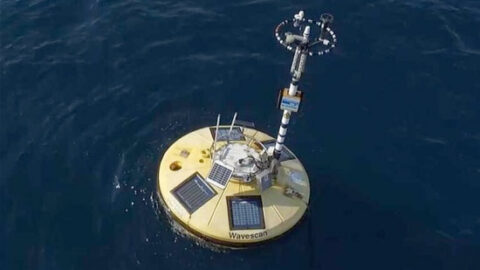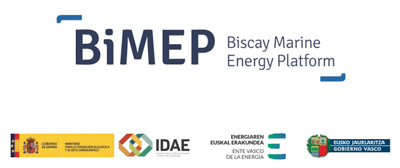A €1.5 million project has been funded by European Maritime and Fisheries Fund (EMFF) programme of the European Union, which addresses environmental concerns of emerging wave energy technologies.
The project SafeWAVE – Streamlining the assessment of environmental effects of wave energy – aims to overcome non-technological barriers that could hinder the future development of one of the main pillars of the EU Blue Growth strategy: ocean energy.
The Consortium, led by AZTI, includes a multidisciplinary team of partners bringing together technology device developers (BIMEP, WELLO, CORPOWER OCEAN and Geps Techno), consultants and researchers (WavEC, CTN, AZTI, RTSYS, UCC and Ecole Centrale) and data managers (Hidromod), aiming to involve the wider community of ocean energy key stakeholders from across Portugal, Basque Country, France, and Ireland.
The Atlantic seaboard offers a vast marine renewable energy (MRE) resource which is still far from being exploited. These resources include offshore wind, wave and tidal. This industrial activity holds considerable potential for enhancing the diversity of energy sources, reducing greenhouse gas emissions and stimulating and diversifying the economies of coastal communities. During EU Oceans Day organised within the framework of the UN Climate Change Conference (COP25) held in Madrid (2-13 December 2019), the European Commissioner for environment, oceans and fisheries, Virginijus Sinkevičius explained that “fighting climate change and protecting marine life biodiversity is a centrepiece of the EU’s ocean policy. Due to climate change, our oceans are facing serious challenges, which require an urgent and comprehensive response. But oceans are also a part of the solution”. Seas and oceans are key drivers of the European economy and have great potential for innovation and growth. The EU’s Blue Growth strategy aims to support sustainable development of marine and maritime sectors as a whole and ocean energy is identified as one of the sectors with high development potential.
The nascent status of the Marine Renewable Energy (MRE) sector and Wave Energy (WE) in particular, yields many unknowns about its potential environmental effects and impacts, some of which are far from being completely understood. The operation of Wave Energy Converters (WECs) in the marine environment is still perceived by regulators and stakeholders as a risky activity, particularly for some groups of species and habitats.
The complexity of MRE licensing processes is often cited as one of the main barriers to the sector’s development. The lack of clear procedures (arising from the lack of specific laws for this type of projects), the number of authorities involved in consenting and the early stage of Maritime Spatial Planning (MSP) implementation are examples of the issues identified as sometimes contributing to delays in permitting of projects.
Finally, there is also a need to provide more information on the sector not only to regulators, developers and other stakeholders but also to the general public. Information on the technical aspects of ocean energy, its potential effects on the marine environment, its contribution to local and regional socio-economic aspects and long term impact at a global scale in terms of clean energy production and decarbonisation are essential for the public and local stakeholders to understand and support. Only with an informed society will it be possible to foster public acceptance for MRE implementation at the local level.
The non-technological barriers that could hinder the future development of WE in EU, are being addressed by the WESE project (http://www.wese-project.eu/) funded by the European Maritime and Fisheries Fund (EMFF) in 2018 and which will complete its work in 2021. Also funded by the EMFF the SafeWAVE project was launched on the 1st October 2020. The SafeWAVE project builds on the results of the WESE project and aims to move forward through the following specific objectives:
- Development of an Environmental Research Demonstration Strategy based on the collection, processing, modelling, analysis and sharing of environmental data (in public database platforms) collected in WE sites from different European countries where WECs are currently operating (Mutriku power plant and BIMEP in Spain, Aguçadoura in Portugal and SEMREV in France).
- Development of a Consenting and Planning Strategy through providing guidance to ocean energy developers and to public authorities tasked with consenting and licensing of WE projects in France and Ireland and the identification of suitable areas for future development of WE under a Maritime Spatial Planning (MSP) approach through the implementation of decision support tools.
- Development of a Public Education and Engagement Strategy to work collaboratively with coastal communities in France, Ireland, Portugal and Spain, to co-develop and demonstrate a framework for education and public engagement (EPE) of MRE enhancing ocean literacy and improving the quality of public consultation.
Juan Bald, Head of Marine and Coastal Environmental Management at AZTI and coordinator of the project, said “In SaveWAVE we will continue the work done in WESE to increase knowledge on priority research areas, extending the analysis to other types of sites, technologies and countries”
Dorleta Marina from BIMEP said: “We are looking forward to continuing contributing to dissipate environmental incertitude surrounding wave energy devices and to improve education and social acceptance regarding these technologies.”




